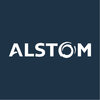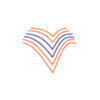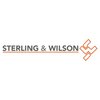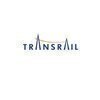Filter interviews by
Al Bawani Co. Safety Officer Interview Questions and Answers
Al Bawani Co. Safety Officer Interview Experiences
1 interview found

(2 Questions)
- Q1. -1 interviews are interviews that are in person and occur between one interviewer and the interviewee. The format of these interviews is typically rather straight-forward, and this style tends to be more o...
- Q2. What are the steps of your job? ... What safety measures do you currently take? ... Do you feel you've received effective safety training? ... How do you determine what protective gear you need? ... What a...
Interview Preparation Tips
Top trending discussions






Interview questions from similar companies

Safety Officer Interview Questions & Answers
Shapoorji Pallonji Groupposted on 2 Nov 2021
I applied via Referral and was interviewed before Nov 2020. There was 1 interview round.
Interview Questionnaire
3 Questions
- Q1. About my Self
- Q2. Height work safety & Control measures
- Ans.
Height work safety involves implementing control measures to prevent falls and injuries.
Conducting a risk assessment before starting any work at height
Providing appropriate training and equipment for workers
Implementing a fall protection plan
Regularly inspecting equipment and ensuring it is in good condition
Establishing clear communication and emergency procedures
Examples of control measures include guardrails, safety ...
- Q3. Engineering control, legal control , administrative control, ppe
Interview Preparation Tips

Safety Officer Interview Questions & Answers
Shapoorji Pallonji Groupposted on 2 Nov 2021
I applied via Referral and was interviewed before Nov 2020. There was 1 interview round.
Interview Questionnaire
2 Questions
- Q1. Height work safety &Control measures
- Q2. Administrative control, Engineering control, legal control
Interview Preparation Tips

I appeared for an interview in Jan 2025.
(2 Questions)
- Q1. What is hira ?
- Ans.
HIRA stands for Hazard Identification and Risk Assessment. It is a systematic process used to identify potential hazards and analyze the associated risks in a workplace.
HIRA involves identifying hazards that could cause harm, assessing the risks associated with those hazards, and implementing control measures to mitigate the risks.
It helps in creating a safer work environment by proactively addressing potential risks b...
- Q2. What is ua/uc.
- Ans.
UA/UC stands for Unsafe Acts/Unsafe Conditions, which are factors that contribute to accidents in the workplace.
UA refers to actions taken by individuals that are unsafe, such as not wearing proper protective equipment.
UC refers to conditions in the workplace that are unsafe, such as faulty equipment or inadequate lighting.
Identifying and addressing UA/UC is crucial in preventing accidents and promoting a safe work env
(2 Questions)
- Q1. What is jsa. & LOTo system.
- Ans.
JSA stands for Job Safety Analysis, a process of identifying potential hazards in a job task. LOTO system stands for Lockout/Tagout, a safety procedure to ensure dangerous machines are properly shut off and not started up again prior to the completion of maintenance or servicing work.
JSA involves breaking down a job task into steps, identifying potential hazards at each step, and implementing controls to mitigate the r...
- Q2. What is material handling.How many types of Material handing.
- Ans.
Material handling refers to the movement, control, and protection of materials throughout the manufacturing, warehousing, distribution, consumption, and disposal processes.
Material handling involves the movement of raw materials, work in progress, and finished goods within a facility or between different locations.
There are four main types of material handling: manual, semi-automated, automated, and mechanized.
Examples...
Interview Preparation Tips

Safety Officer Interview Questions & Answers
Shapoorji Pallonji Groupposted on 30 May 2022
I applied via Naukri.com and was interviewed in Apr 2022. There were 4 interview rounds.

How to implement workers to do work in a Safety process.
How to minimize and control hazard.
(2 Questions)
- Q1. Salary discussion and about previous work.
- Q2. How much expection about salary.
Interview Preparation Tips
- About safety hazard.

Safety Officer Interview Questions & Answers
Shapoorji Pallonji Groupposted on 26 Dec 2021
I applied via Walk-in and was interviewed in Nov 2021. There was 1 interview round.
Interview Questionnaire
21 Questions
- Q1. HIRA full from
- Ans.
HIRA stands for Hazard Identification and Risk Assessment.
HIRA is a systematic process of identifying potential hazards and analyzing the associated risks.
It involves identifying the hazards, assessing the risks, and implementing control measures to mitigate the risks.
HIRA is an important tool for safety officers to ensure the safety of employees and the workplace.
Examples of hazards that can be identified through HIRA...
- Q2. ISO stander
- Q3. IBOSh full from
- Ans.
I'm sorry, but the question is not clear and seems to be incomplete.
Please provide more context or rephrase the question.
Without proper information, I cannot provide a relevant answer.
Kindly clarify the question so that I can assist you better.
- Q4. Safety belt lanyard length
- Q5. NEbosh full from
- Q6. Audit report
- Q7. Job related
- Q8. Crane load capacity
- Q9. LMR full from
- Ans.
LMR full from refers to a situation where the Land Mobile Radio system is at maximum capacity.
LMR full from means that the Land Mobile Radio system is unable to accommodate any more users or communications.
This can occur when all available channels or frequencies are in use.
It may result in communication delays or the inability to establish new connections.
LMR full from can impact the effectiveness of emergency respons...
- Q10. Work to permit
- Q11. EHS meeting
- Q12. Road safety
- Q13. Electrical safety
- Q14. Fire hazard
- Q15. What is safety
- Ans.
Safety is the state of being protected from harm, danger, or injury.
Safety involves identifying and assessing potential hazards
It requires implementing measures to prevent or mitigate those hazards
It involves training and educating individuals on safe practices
Safety is a continuous process that requires ongoing evaluation and improvement
Examples of safety measures include wearing personal protective equipment, followi...
- Q16. Shut down work
- Ans.
Shutting down work is a crucial safety measure to prevent accidents and ensure the well-being of workers.
Shutting down work may be necessary in case of an imminent danger or hazard that cannot be immediately controlled.
It is important to have clear protocols and procedures in place for shutting down work in different scenarios.
Examples of situations that may require work shutdown include gas leaks, chemical spills, str...
- Q17. CSR activities
- Q18. Foundation work relate
- Q19. Severity rate
- Q20. What is accident
- Ans.
An accident is an unexpected and unintentional event that causes harm or damage.
Accidents can happen in any setting, including workplaces, homes, and on the road.
They can result in physical injuries, property damage, or both.
Accidents can be caused by human error, equipment failure, or environmental factors.
Examples of accidents include slips and falls, car crashes, and machinery malfunctions.
- Q21. What is incident
- Ans.
An incident is an unplanned event that results in injury, damage, or loss.
Incidents can occur in any workplace or environment
They can range from minor incidents such as slips and falls to major incidents such as explosions or fires
Incidents should be reported and investigated to prevent future occurrences
Proper safety measures and training can help prevent incidents from happening
Interview Preparation Tips

Safety Officer Interview Questions & Answers
Shapoorji Pallonji Groupposted on 19 Oct 2023

(1 Question)
- Q1. Salary, location jonlb
(1 Question)
- Q1. Work permit, checklist, hira , JSA

Safety Officer Interview Questions & Answers
Megha Engineering & Infrastructuresposted on 19 Jun 2021
I applied via Walk-in and was interviewed in Dec 2020. There was 1 interview round.
Interview Questionnaire
1 Question
- Q1. 1 Tell me about your self 2 Project work 3 some basic topics related to safety 4 C.V. basic topics
Interview Preparation Tips

Safety Officer Interview Questions & Answers
Megha Engineering & Infrastructuresposted on 23 Aug 2023
I applied via Naukri.com

(5 Questions)
- Q1. How many type of hazard
- Ans.
There are three main types of hazards: physical, chemical, and biological.
Physical hazards include slips, trips, falls, noise, vibration, and extreme temperatures.
Chemical hazards involve exposure to harmful substances like gases, liquids, and dusts.
Biological hazards come from exposure to viruses, bacteria, fungi, and parasites.
- Q2. What is confined space
- Ans.
Confined space is an area that is not designed for continuous occupancy, has limited entry and exit points, and may have poor ventilation.
Confined spaces are typically small and enclosed, making it difficult to enter and exit.
These spaces may contain hazardous substances or conditions that can be harmful to workers.
Examples of confined spaces include storage tanks, silos, tunnels, and sewers.
- Q3. What is hazard of work at height
- Ans.
Working at height poses risks of falls, falling objects, and structural collapses.
Falls from height can result in serious injuries or fatalities
Objects dropped from height can cause harm to workers below
Structural collapses can occur due to improper installation or maintenance
Safety measures such as guardrails, harnesses, and regular inspections are crucial to prevent accidents
- Q4. What is safety in construction
- Ans.
Safety in construction refers to the measures taken to prevent accidents, injuries, and fatalities on construction sites.
Ensuring proper training and supervision of workers
Implementing safety protocols and procedures
Providing personal protective equipment (PPE)
Regular inspections of equipment and work areas
Emergency preparedness and response plans
Examples: Fall protection systems, scaffolding safety measures
- Q5. How many type of fire
- Ans.
There are five main classes of fire: Class A, Class B, Class C, Class D, and Class K.
Class A fires involve ordinary combustible materials such as wood, paper, and cloth.
Class B fires involve flammable liquids like gasoline, oil, and grease.
Class C fires involve energized electrical equipment.
Class D fires involve combustible metals like magnesium, titanium, and sodium.
Class K fires involve cooking oils and fats commonl
Interview Preparation Tips

Safety Officer Interview Questions & Answers
Megha Engineering & Infrastructuresposted on 25 Jun 2024
(2 Questions)
- Q1. What is HIRA and how to prepare it
- Ans.
HIRA stands for Hazard Identification and Risk Assessment. It is a systematic process to identify potential hazards and assess the associated risks.
Identify all potential hazards in the workplace or task
Assess the likelihood and severity of each hazard
Determine the level of risk for each hazard
Implement control measures to mitigate or eliminate the risks
Regularly review and update the HIRA as needed
- Q2. What is JSA and its purposes
- Ans.
JSA stands for Job Safety Analysis. It is a process used to identify and control hazards in the workplace.
JSA involves breaking down a job into its individual tasks and identifying potential hazards associated with each task.
The purpose of JSA is to prevent accidents and injuries by proactively addressing safety risks.
JSA helps in developing safe work procedures and training employees on how to perform tasks safely.
Exa...
HIRA , JSA, MSDS , PTW
Interview Preparation Tips
Al Bawani Co. Interview FAQs
Tell us how to improve this page.
Al Bawani Co. Interviews By Designations
- Al Bawani Co. Architect Interview Questions
- Al Bawani Co. Electrical Supervisor Interview Questions
- Al Bawani Co. Senior Document Controller Interview Questions
- Al Bawani Co. Safety Officer Interview Questions
- Al Bawani Co. IT Support Technician Interview Questions
- Al Bawani Co. Diploma Mechanical Engineer Interview Questions
- Al Bawani Co. B Tech Civil Engineer Interview Questions
- Al Bawani Co. Duct Man Interview Questions
- Show more
Interview Questions for Popular Designations
- Safety Supervisor Interview Questions
- Fire & Safety Officer Interview Questions
- Senior Safety Officer Interview Questions
- Safety Engineer Interview Questions
- Safety Manager Interview Questions
- Drug Safety Associate Interview Questions
- Safety Supervisor, Safety Officer Interview Questions
- Safety Executive Interview Questions
- Show more
Al Bawani Co. Safety Officer Interview Process
based on 1 interview
Interview experience
Safety Officer Interview Questions from Similar Companies
Al Bawani Co. Safety Officer Reviews and Ratings
based on 4 reviews
Rating in categories
|
Mechanical Engineer
8
salaries
| ₹8 L/yr - ₹15 L/yr |
|
Store Keeper
7
salaries
| ₹2.4 L/yr - ₹6 L/yr |
|
Document Controller
6
salaries
| ₹0.9 L/yr - ₹6 L/yr |
|
HSE Officer
5
salaries
| ₹5.4 L/yr - ₹7.2 L/yr |
|
Electrical Engineer
4
salaries
| ₹12 L/yr - ₹20 L/yr |

Megha Engineering & Infrastructures

Shapoorji Pallonji Group

Alstom Transportation

Tata Technologies
- Home >
- Interviews >
- Al Bawani Co. Interview Questions >
- Al Bawani Co. Safety Officer Interview Questions















